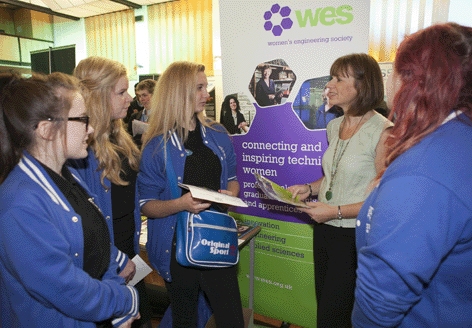Women in engineering, or the lack of them, is definitely a ‘hot topic’ at the moment, and something that we are hearing more and more about. But what — apart from talking — is actually being done, and what action are we recommending in order to finally start to improve the situation?

We are pretty familiar with the figures now, that less than 10 per cent of the engineering workforce in the UK are women, and even fewer apprentices, and while this might be improving in some sectors, the progress being made is painfully slow. The reasons why we need a diverse workforce are clear: a diverse workforce is likely to be more innovative, more productive, have a wider diversity of thought, be more client focused, more representative, more stable and generally happier. And, in addition to these reasons, we just need more engineers, so increasing the size of the talent pool through encouraging women into the sector is a no-brainer. Thankfully, these anecdotal reasons are starting to be quantified by some of the top companies who need a competitive edge and recent figures show that companies where women make up a third of board members significantly outperform their rivals, with shareholder returns on average 53 per cent higher, profit margins 42 per cent better, and return on capital 64 per cent higher. So it isn’t philanthropy that drives the desire for a more diverse workplace, it is actually becoming a business imperative.
‘Companies need to show girls what a career in engineering is like and what it offers
Having agreed that it is a good thing to get more girls into engineering the next question is how do we make it happen? Well, let’s stop talking about it in roundtable discussions, consulting on it at government level and measuring the exact numbers to two decimal places, but actually making a plan and delivering some long-term solutions. For me, the biggest way to encourage girls into engineering is through careers advice at school, with the support and collaboration of companies. Such companies need to act as magnets to draw girls to them. They need to show girls what a career in engineering is like and what it offers, and allow them to see it as a career for them. This isn’t as difficult as it sounds, and easy wins are possible through liaisons with local schools. Open days, visits, teacher training, presence at parents’ evenings and dedicated website space are all ways that companies can and should interact with the talent around them. But it takes more than single point interventions, and a longer-term relationship is needed to keep the girls on track and stop them being drawn to other STEM sectors such as medicine or veterinary science.
The government too has a role to play in providing careers advice to students and staff alike, but engineering as a sector can also do a lot to advertise its worth and value to society, and start communicating its role more effectively. It’s not necessarily about trying to make girls fit into the stereotype of a traditional engineer. The key to success might lie in pointing out that the skills that girls can often bring to engineering — such as creativity, good communication, empathy, ingenuity, attention to detail, coupled with a desire to make a difference and make the world a better place — are exactly the skills we need. In other words, diversity is what it’s all about.
Another key factor is what you do with your female employees once you have them in the workplace, how you retain them and how you treat them during and after a career break. These women are your future leaders and you need to find ways of making your business work for them so that you retain their experience, and use their commitment and the extra skills they bring back with them after career breaks. If you can do this then you really will reap the benefits as a company with a diverse workplace.
Dawn Bonfield is a materials engineer and executive vice president of the Women’s Engineering Society










UK Enters ‘Golden Age of Nuclear’
The delay (nearly 8 years) in getting approval for the Rolls-Royce SMR is most worrying. Signifies a torpid and expensive system that is quite onerous...